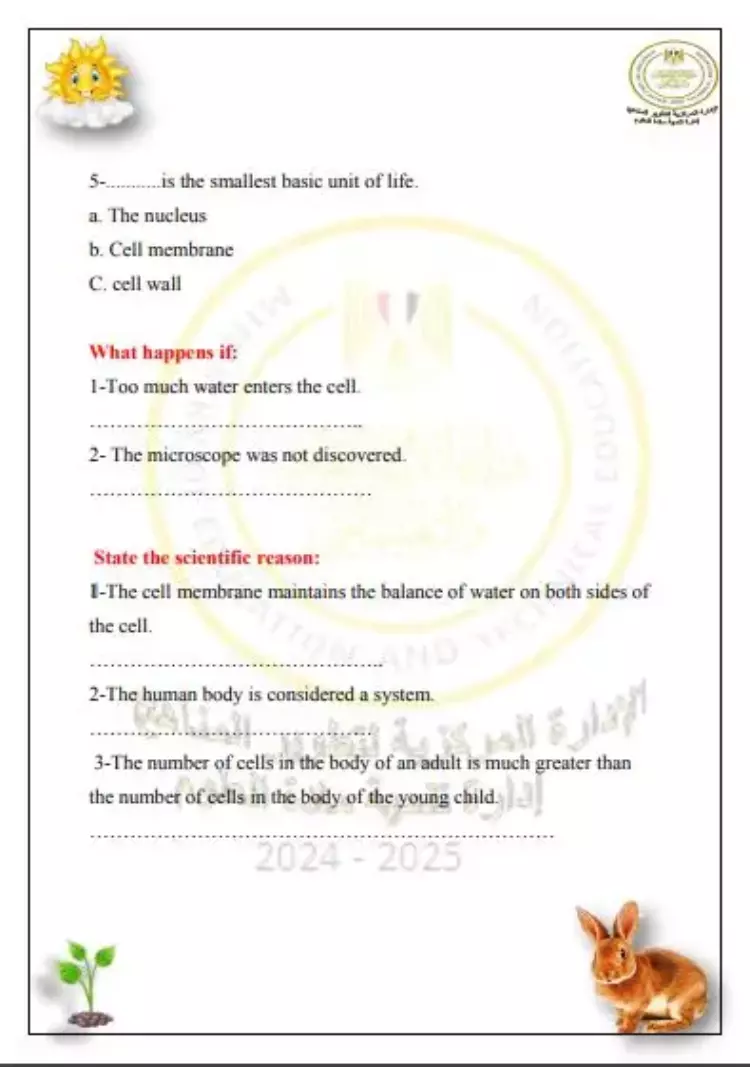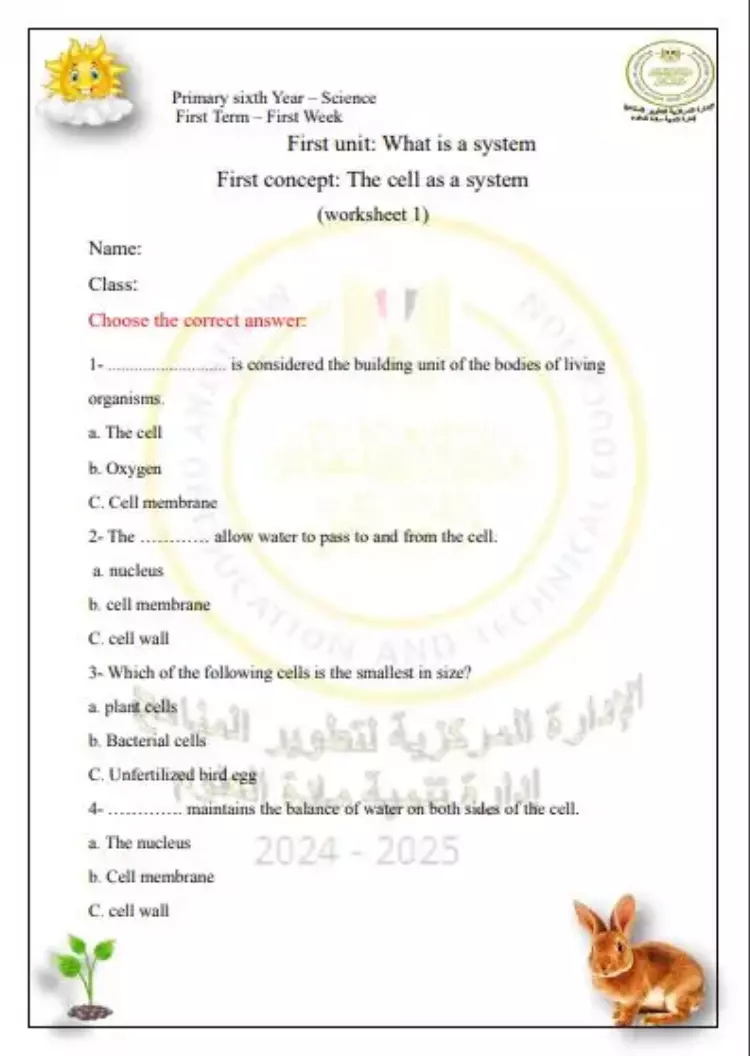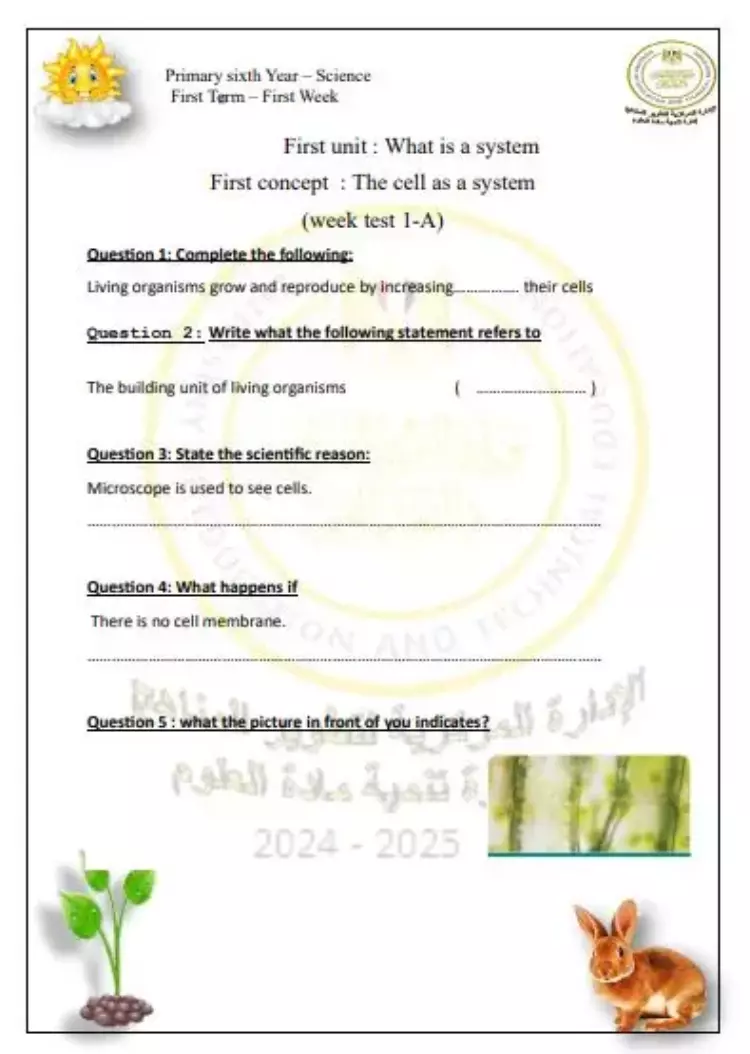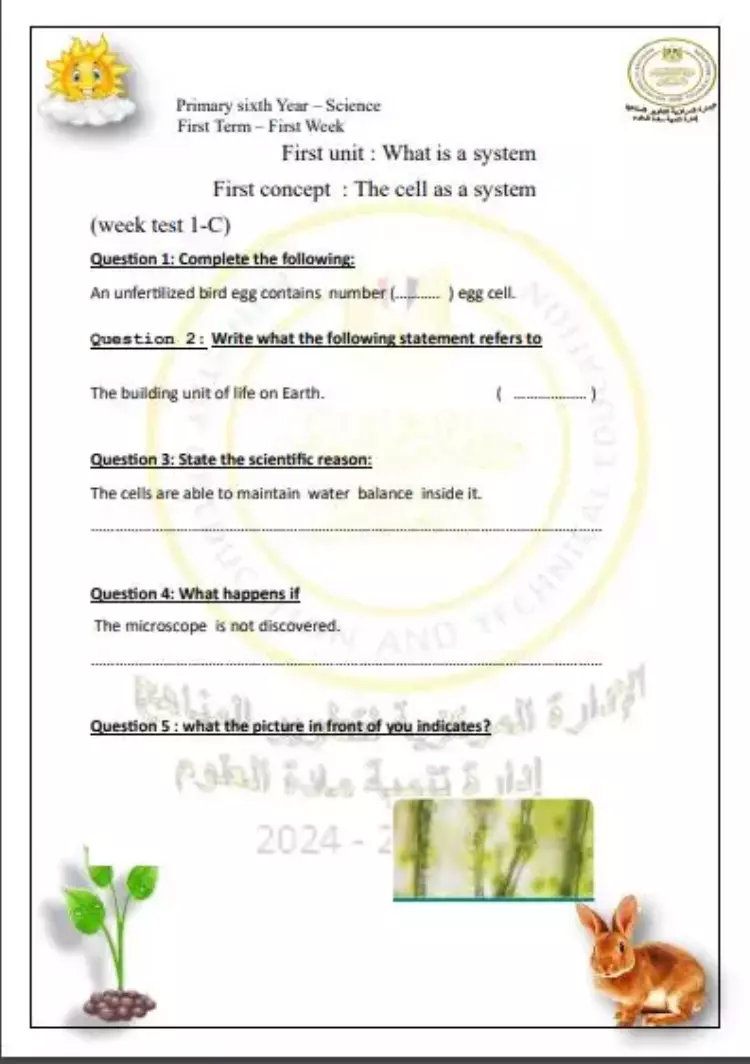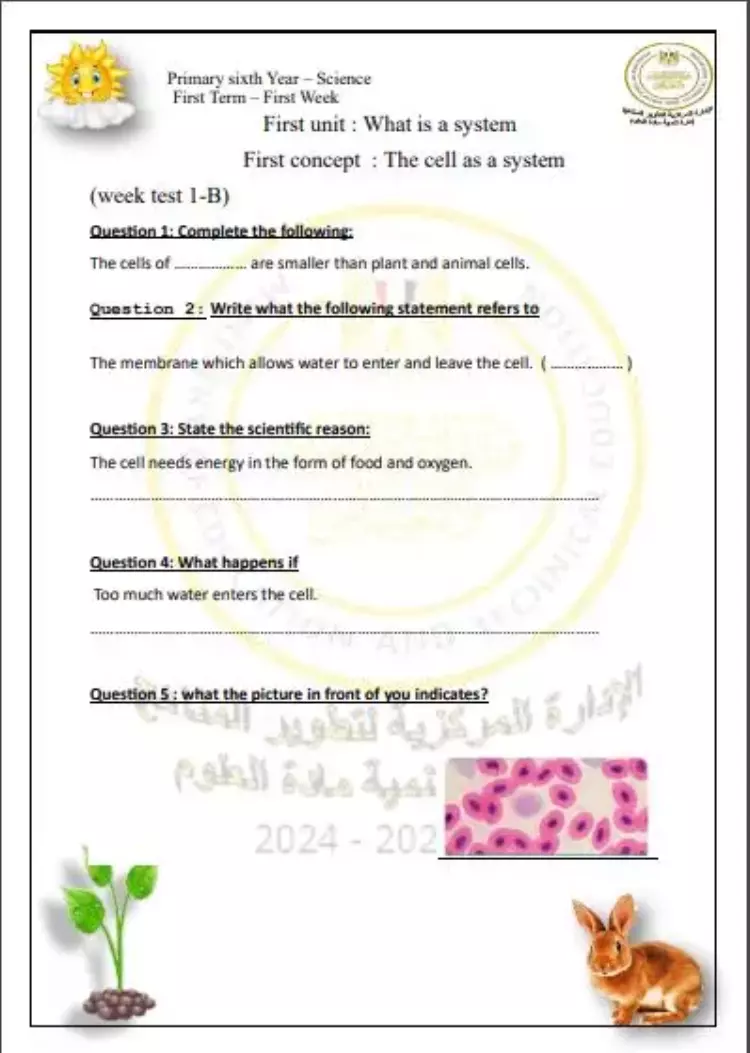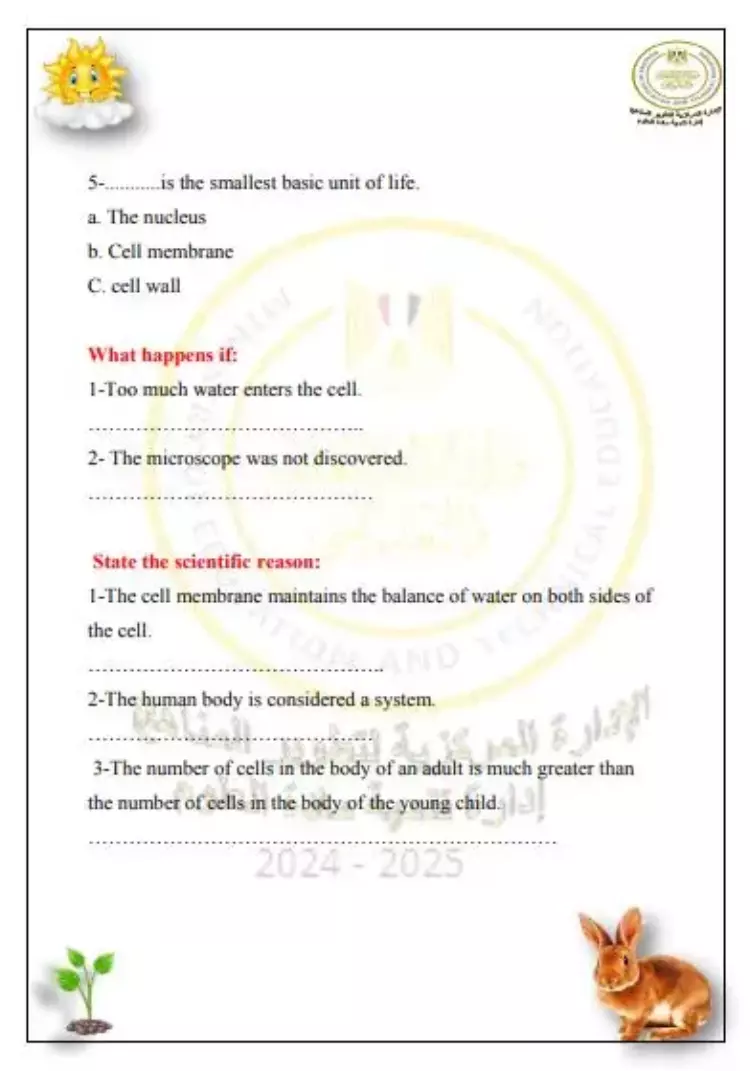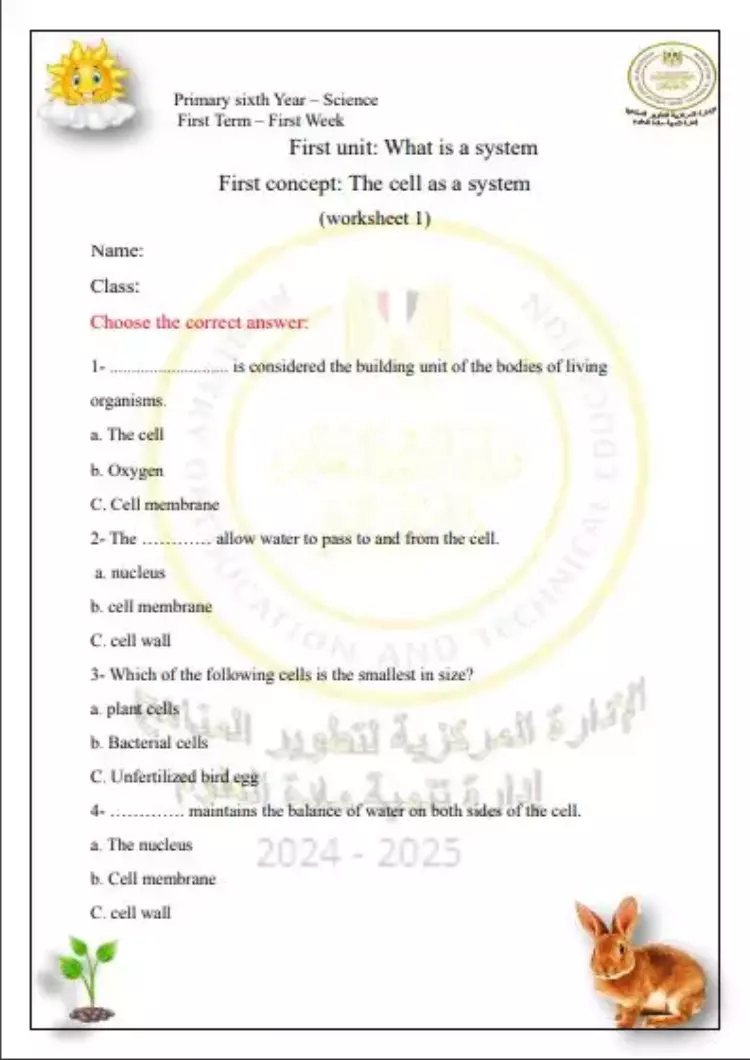الواجب المنزلي والصفي وتقييم الأسبوع الأول science للصف السادس الابتدائي
نشرت الإدارة المركزية لتطوير المناهج بوزارة التربية والتعليم، مستندًا للطلاب الصف السادس الابتدائي يضم تدريب على الواجب المنزلي والأداء الصفي وتقييم الأسبوع الأول لمادة science.
الأداء المنزلي والصفي وتقيم الأسبوع الأول science للصف السادس
وضعت إدارة تنمية مادة العلوم بوزارة التربية والتعليم، نماذج من تدريب الأداء المنزلي والصفي وتقيم الأسبوع الأول science للصف السادس، وذلك على النحو التالي:
الأداء المنزلي science الصف السادس:
Choose the correct answer:
…………….. is considered the building unit of the bodies of living organisms.
The cell
Oxygen
Cell membrane
2- The ... allow water to pass to and from the cell.
a. nucleus
b. cell membrane
C. cell wall
Which of the following cells is the smallest in size?
a. plant cells
b. Bacterial cells
C. Unfertilized bird egg
What happens:
Too much water enters the cell.
The microscope was not discovered.
State the scientific reason:
The cell membrane maintains the balance of water on both sider of the cell
The human body is considered a system.
The number of cells in the body of an adult is much greater than the number of cells in the body of the young child
تقييم الأسبوع الأول science الصف السادس الابتدائي:
Question 1: Complete the following:
Living organisms grow and reproduce by increasing. ncreasing….. their cells
Question 2: Write what the following statement refers to
The building unit of living organisms(……..)
Question 3: State the scientific reason:
Microscope is used to see cells.
Question 4: What happens if
There is no cell membrane.
Question 5: what the picture in front of you indicates?
الأداء الصفي الصف السادس science
M Choose the correct answer:
The ……… allow water to pass to and from the cell.
a. nucleus
b. cell membrane
C. cell wall
Which of the following cells is the smallest in size?
a. plant cells
b. Bacterial cells
C. Unfertilized bird egg
maintains the balance of water on both sides of the cell.
a. The nucleus
b. Cell membrane
C. cell wall



